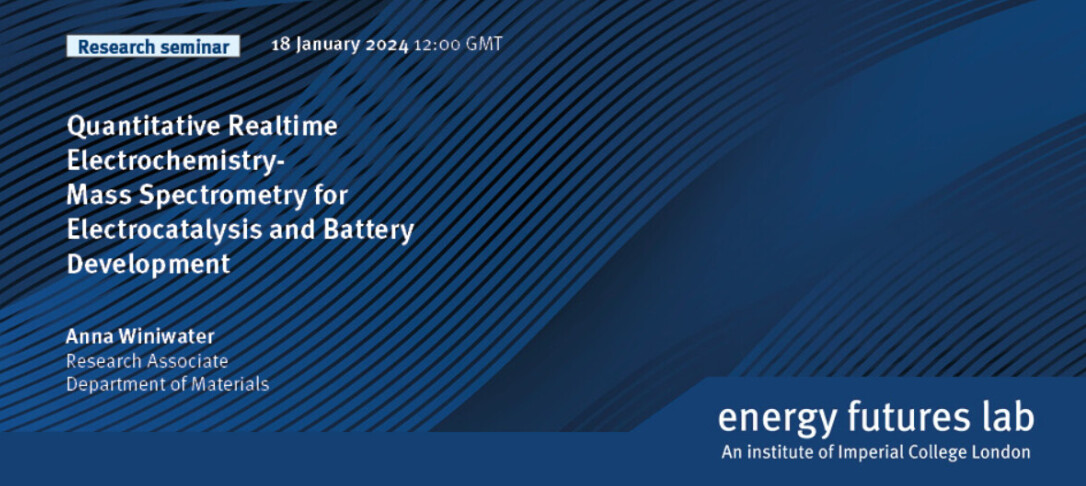
Quantitative Realtime Electrochemistry-Mass Spectrometry for Electrocatalysis and Battery Development
Renewable energy sources such as solar and wind are intermittent in nature, calling for the development of efficient storage solutions. Electrochemical energy storage is among the most promising technologies to do the job – either by direct storage in batteries, or indirectly through the electrochemical production of chemicals (known as Power-to-X) which can then be used for electricity generation (e.g.: in fuel cells) or used instead of chemicals currently produced from fossil sources. In both cases, much progress has been made in the past years, especially regarding the upscaling of production of existing technologies. Nonetheless, research on improving the materials involved is also ongoing, e.g.: to improve efficiency or to avoid having to use scarce or otherwise problematic materials such as Pt-group metals, Co, or Li.
The development of new electrocatalysts requires understanding the reactions, their limitations, and degradation processes on a fundamental level. Conventionally, electrochemical testing relies on measuring current and voltage under specific conditions. However, gaining a deep understanding of the factors governing electrocatalytic reactions requires reliable measurement of the identity and amount of the products generated at the electrode as a function of electrochemical parameters instead. Detecting these products in real-time enables the observation of otherwise inaccessible, fast and transient phenomena. Coupling mass spectrometry (MS) with electrochemistry (EC) allows for real-time detection with outstanding sensitivity.
At the Interfacial Electrochemistry Group, we use two EC-MS setups (one of which is part of the Royce Institute at Imperial) to study a number of electrochemical reactions in both aqueous and non-aqueous environments. In this talk, I will introduce online EC-MS, how to enable quantitative analysis, and show some of our recent results on electrocatalyst development and battery degradation studies.
Biography:
Anna Winiwater is a Postdoctoral Research Associate in the Interfacial Electrochemistry Group supervised by Prof Ifan Stephens (Department of Materials). She has a background in Technical Chemistry and Materials Science and obtained her PhD in Surface Physics and Catalysis at the Technical University of Denmark under the supervision of Prof Ib Chorkendorff and Prof Brian Seger. She then worked at Danish catalyst manufacturer Topsoe (2019-2021) before joining the start-up company Spectro Inlets, manufacturer of chip-based electrochemistry-mass spectrometry (EC-MS) instruments, where she stayed from 2021 to 2023. Anna has extensive experience with in-situ and online characterisation of electrochemical reactions, particularly using EC-MS. She started using a prototype instrument already during her PhD and has been using EC-MS ever since, focussing on accurate quantification, and recently on measurements in non-aqueous conditions, studying electrochemical nitrogen reduction and battery degradation.
About Energy Futures Lab
Energy Futures Lab is one of seven Global Institutes at Imperial College London. The institute was established to address global energy challenges by identifying and leading new opportunities to serve industry, government and society at large through high quality research, evidence and advocacy for positive change. The institute aims to promote energy innovation and advance systemic solutions for a sustainable energy future by bringing together the science, engineering and policy expertise at Imperial and fostering collaboration with a wide variety of external partners.


